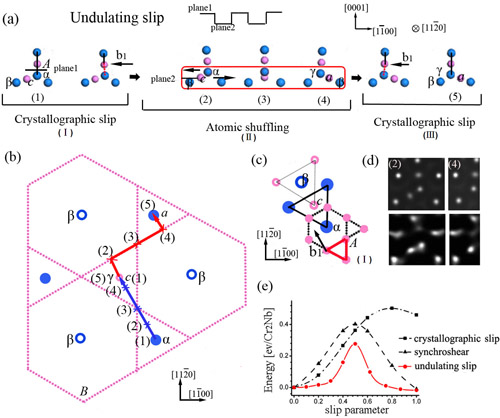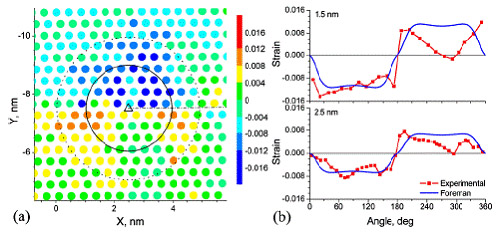Attributed to their unique chemical, physical, and mechanical properties, intermetallic compounds have attracted increasing research attention. In order to obtain wide applications, the brittleness of intermetallics has to be overcome. To improve the ductility of materials, effective plastic deformation is necessary, which is usually carried out by nucleation and slip of dislocations. Intermetallic compounds generally possess complex structures in which dislocations slip in groups, even involving short-range diffusion along different directions. For instance, special zonal dislocations were proposed for the different displacements on differing slip planes. However, the physical processes of dislocation glide with such local mutual motion of atoms are still largely speculative. Recently, researchers from Shenyang National Laboratory for Materials Science and Tsinghua University report on the slip process of dislocations in the Cr2Nb Laves phase, a typical complex intermetallic compound, and its implications on the mechanical properties of the material (Physical Review Letters, 106, 165505, 2011). By combining density-functional theory calculations and aberration-corrected transmission electron microscopy, dislocations in the Laves phase are shown to slip in an undulating path. During the slip, the dislocation cores jump up and down between a weakly bound plane and an adjacent strongly bound plane for gliding and atomic shuffling, respectively. These results may help understand the brittle-to-ductile transition of intermetallic compounds. The dislocation cores are also shown with an abnormal strain field, which is presumably related to the complex dissociation of dislocations in the material, as revealed by the Lattice Distortion Analysis (LADIA) method.

Figure 1. The undulating slip process. (a) Side-view of the atomic configurations (1)-(5) during the slip, which contains a crystallographic slip in plane 1 and an atomic shuffling in the triple layer. (b) and (c) Top-view of the atomic configurations during the slip. The blue path denotes the movement of Nb from the site α to γ, and the red path denotes the motion of Cr from c to a. The shuffling occurs from the configuration (2) to (4). (d) A comparison between the calculated and experimental results. The upper two images are the simulated ones for the configurations (2) and (4). The lower two are the corresponding experimental images. (e) Energy profiles for different slip mechanisms. The undulating slip has a path with the lowest energy.

Figure 2. Results of the strain field analysis. (a) εxx strain map obtained from an experimental HRTEM image of the dislocation by the LADIA method. The triangle denotes the center of the dislocation core and circles mark the location of measurements shown in (b) with distances of 1.5 nm (solid line) and 2.5 nm (dotted line), respectively, from the core. (b) Angular variation of strain fields measured experimentally and calculated with the Foreman model.

